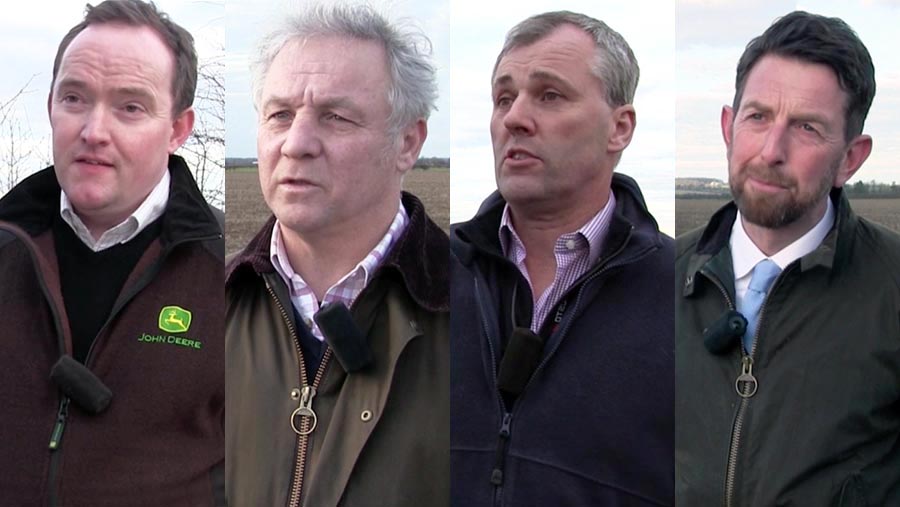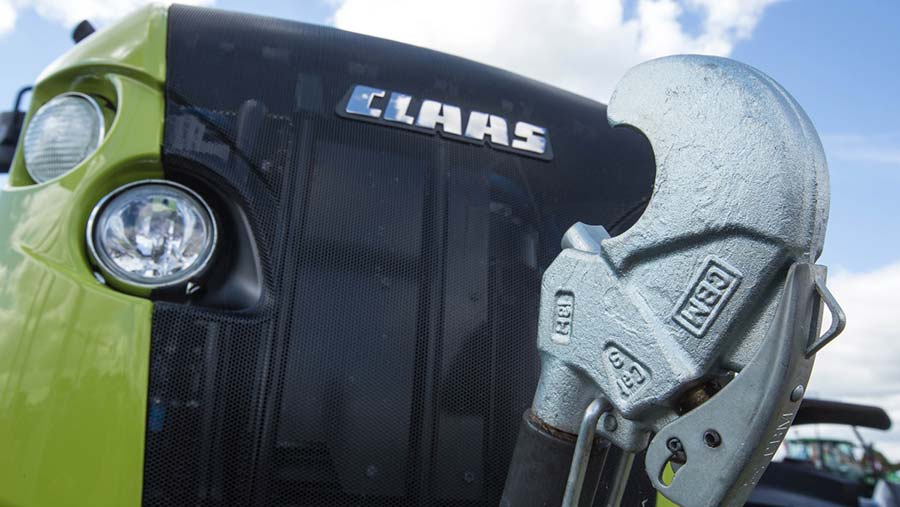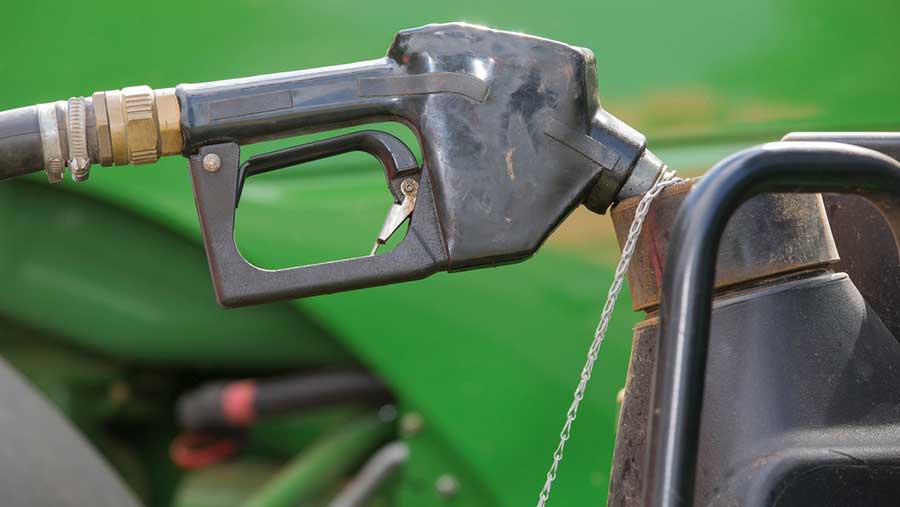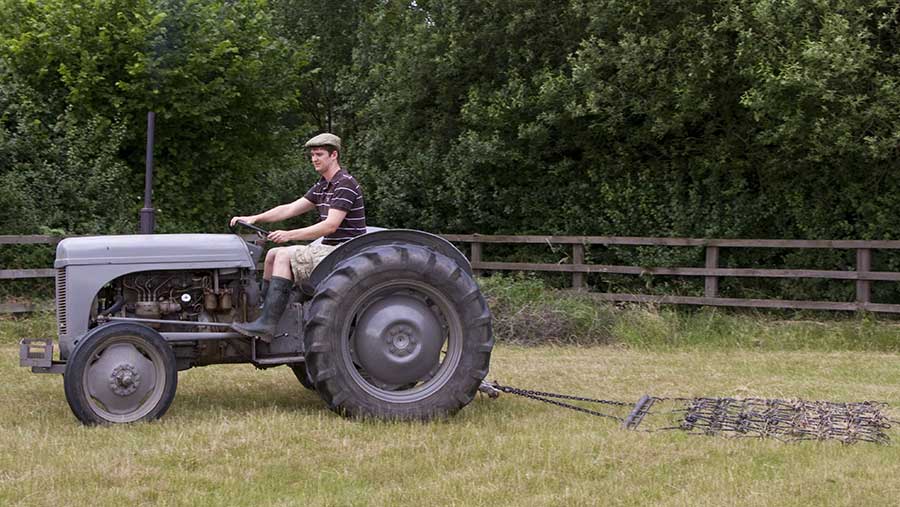Video: 4 growers share their tips to keep costs under control

As the price of wheat ambles along at £100/t, getting a firmer grip on costs will help growers live with lower prices.
At a BASF Costs under Scrutiny meeting, Farmers Weekly gathered seven top tips from four growers who are doing just that. Watch the video to get a run down of their top cost saving tips and see their advice in full below.
When it comes to cost control Lincolnshire growers Andrew Ward and Pat Thornton, and Northumberland growers Jack Storey and Connor Colgan, know a thing or two.
Leadenham-based grower Andrew Ward has been targeting fixed costs like labour and machinery.
He’s reduced cultivation and establishment costs on his 660ha farm by abandoning the plough in favour of reduced cultivations and taking a zero-tolerance approach to blackgrass to aid yields and cut chemical costs.
See also: 14 useful machinery, tractor and arable apps for 2016
Like Mr Ward, farm advisor Pat Thornton has been lowering machinery costs by sharing equipment with a neighbouring grower. He also runs his own 140ha farm in Epworth with his father.
Jack Storey farms about 10 miles north of Newcastle airport. When budgeting, Mr Storey costs everything within his budget, including household costs like food shops and running private vehicles
He makes sure he knows what a variance in yield and/or commodity prices will have on everything that he has to spend. Mr Storey’s brothers build and repair machinery, which also helps to keep the farm finances in check.
Efficiency and accuracy drive grower Connor Colgan’s quest to keep costs down. He manages his Northumberland farm according to LEAN principles by judging big expenditure like machinery purchases on how cost and resource efficient that purchase is.
Watch the video of the growers giving their top cost saving tips.
Now read the growers’ seven top tips for cost control in full.
1. Know your numbers

© Rex Shutterstock
Ask yourself: “Do I actually know what all my costs are?” This is where Mr Storey says every cost saving effort must start.
“If you don’t know them then there’s no shame in that, but the time has come where you need to find out what they are,” he says.
This could involve drafting in outside help or joining a benchmarking group, something that Mr Thornton advocates to help get a more detailed idea of costs.
“Knowing your costs is everything in terms of cost management. I’m a big believer that there’s no such things as average costs and you have to take the painful steps of going through your costs on a personal level,” he explains.
“Make sure you know where every last pound is going – its all coming out of the bank account and some where its got to be attributed to your production costs.
“The volatility and decline in commodity prices makes this even more important now. Attention to detail is key.”
Being clued up on your costs of production means you can then decide which ones to tackle first.
2. Manage your margins
“In this environment it’s all about trying to obtain margin, which is a combination of costs and value,” says Connor Colgan, who farms near Berwick-upon-Tweed.
Once you’ve got a thorough understanding of all your costs, both fixed (like labour and machinery costs) and variable (such as fertiliser and fungicide costs), he says growers should look to add value to their grain.
“Use the futures, sell forward and then you have a predictable income and so you can hope to predict your margin.”
He adds that part of managing margins is being able to hit the predicted budget for the season. For example, this means making sure spray timings are hit accurately, with the difference between missing the prime moment for a T1 or T2 application costing 0.5t/acre, he estimates.
3. Don’t let blackgrass bankrupt you
When it comes to driving down costs and maintaining profitability, Mr Ward has got blackgrass on the brain.
“In every single decision we make, we first consider what effect it will have on blackgrass control because if you have got bad blackgrass populations it completely ruins any profits that you might happen to make,” he says.
If you are losing the war on arable farming’s most costly weed, then it’s time change tactics if you want to get things under control and continue to turn a profit in times of low commodity prices.
“Don’t go on doing what you’ve always done hoping that you’ll get a different result because you won’t.
“You need to change what youre doing and try and manage blackgrass in a different way. If you don’t manage it well then it will beat you.”
Mr Ward uses spring cropping and hand rouging to get on top of the problem and is so hell-bent on eradicating blackgrass, he has even sprayed off badly infested areas of crops with glyphosate to prevent seed return.
4. Target ‘big ticket’ items first
It’s important to understand the costs which actually create a profit margin and the ones that take margin away.
Mr Thornton advises identifying and dealing with the “big ticket” items in the cost structure as a priority.
“Without a shadow of a doubt these will be your fixed costs, like your labour and machinery, so focus on those first. Build up a picture and find out where the money is spent.”
5. No ploughing, reduced tillage instead

©Tim Scrivener
Mr Ward ceased ploughing in 2002, but admits he did plough a handful of fields three years ago following research which suggested it had a big impact on blackgrass control.
“We tried a couple of fields three years ago and again we found that it didn’t have any blackgrass control at all.
“We tried it on heavy land and it actually increased our establishment costs by £120/ha because that field was so rough after the plough we had to do extra cultivations and we got 0.7t/ha less yield,” he explains.
That compares to Mr Ward’s conventional farm practice, which is a Simba Solo and press following close behind the combine.
He aims to leave land it as long as he can in the autumn before drilling a cereal crop, to maximise blackgrass control.
The move to a streamline cultivation system put an end to years of ploughing, rolling, discing and power harrowing on heavy land, prior to drilling cereals.
All that work used to cost him £144/ha and took an average of 186 minutes/ha – remember, time is money.
His new reduced cultivations approach costs about £80/ha and takes a third of the time.
6. Factor in fuel use
Make sure you’re fully accounting for all machinery costs – it’s sometimes easy to forget about the cost of the fuel you’re using.
Every drop of fuel used on Mr Ward’s farm is recorded and the numbers are used in cost of production calculations.
Working on different soil types in wet and dry years will have a dramatic impact on the amount of fuel used and therefore your costs of production.
“Fuel is a big thing that I think a lot of people underestimate. With our Case Quadtrac over 40% of our total operating costs are down to fuel.
“We record the fuel that goes into every tractor and this is used for cost of production of all our crops. It’s something you really need to be doing.
“I know fuel prices have come down from what they were a couple years ago, but so have grain prices,” he says.
7. Be bold and try something new
“Old habits die hard” as the saying goes. Farmers are brilliant at doing the same thing over and over and over again because, well, they’ve always done it like that.
Defying convention and giving something else a go may not come naturally to all growers but Mr Thornton says it’s vital when attempting to cut costs and maintain margins in times of depressed grain prices.
“Be more willing to work with your neighbouring growers and be open to new ideas too. There will be a different way of doing things it’s just a matter of finding it. For example, collaboration is a good way of sharing your costs.”
Mr Ward agrees that thinking needs to change and on farms which are struggling to turn a profit, brave steps are needed to turn things around. Cultivation is a classic case in point, he argues.
“There are a lot of cultivations done which I think are unnecessary – I would call them recreational cultivations.
“People go in six times before the crop is planted and they do it because they’ve always done it or their father did it. But their father didn’t have the costs that we now have got.”






